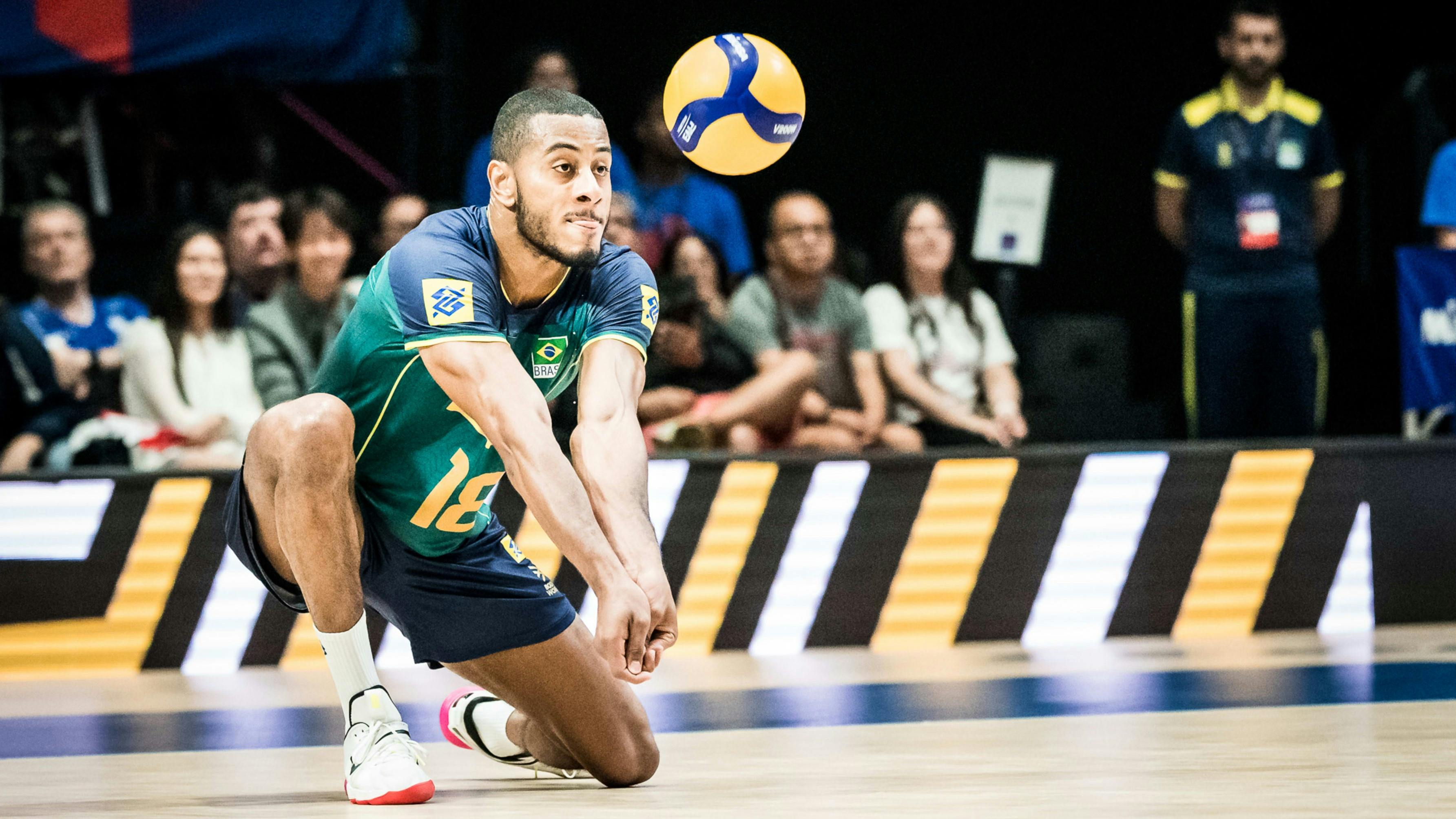Maricá Vs. Nova Iguaçu: A Clash Of Coastal And Industrial Titans In Brazil - Maricá and Nova Iguaçu are two of the most important cities in the Brazilian state of Rio de Janeiro. Maricá is a coastal city, while Nova Iguaçu is an industrial city. Both cities have their own unique advantages and disadvantages.
Editor's Notes: "Maricá Vs. Nova Iguaçu: A Clash Of Coastal And Industrial Titans In Brazil" have published today date. This topic important to read as it will provide an insight into the strengths and weaknesses of each city, and help you make an informed decision about which city is right for you.
Our team has spent countless hours analyzing and digging through available data, we put together this guide to help target audience make the right decision.
| Criteria | Maricá | Nova Iguaçu |
|---|---|---|
| Population | 160,000 | 950,000 |
| Area | 349 square kilometers | 510 square kilometers |
| GDP | R$2.5 billion | R$10.5 billion |
| Unemployment rate | 4.5% | 7.5% |
| Pros | - Beautiful beaches - Laid-back atmosphere - Relatively low cost of living |
- Strong economy - Good job market - Excellent infrastructure |
| Cons | - Can be crowded during peak season - Not as much nightlife as Rio de Janeiro - Far from major airports |
- Can be polluted - High crime rate - Traffic congestion |
Transition to main article topics - Overall, Maricá and Nova Iguaçu are two very different cities. Maricá is a great place to live if you are looking for a laid-back lifestyle, while Nova Iguaçu is a better choice if you are looking for a more urban environment. Ultimately, the best city for you will depend on your individual needs and preferences.
Maricá is a coastal city located about 30 miles northeast of Rio de Janeiro. It is known for its beautiful beaches, laid-back atmosphere, and relatively low cost of living. Maricá is a popular destination for tourists and retirees, and it is also home to a number of oil and gas companies.
Nova Iguaçu is an industrial city located about 20 miles north of Rio de Janeiro. It is one of the most important industrial centers in Brazil, and it is home to a number of large factories and warehouses. Nova Iguaçu is also a major transportation hub, and it is home to one of the largest airports in Brazil.
FAQ
Learn more about the intriguing contrast between Maricá and Nova Iguaçu, two distinct cities in Brazil, through these frequently asked questions.

Lessons from the Industrial Titans | Colossus® - Source www.joincolossus.com
Question 1: What are the key distinctions between Maricá and Nova Iguaçu?
Answer: Maricá, a coastal city, boasts stunning beaches and a thriving tourism industry. Nova Iguaçu, on the other hand, is an industrial hub known for its manufacturing and transportation sectors.
Question 2: How do the economies of these cities differ?
Answer: Maricá's economy is driven by tourism, oil production, and fishing, while Nova Iguaçu's economy relies heavily on manufacturing, logistics, and services.
Question 3: What are the challenges faced by Maricá and Nova Iguaçu?
Answer: Maricá faces issues related to environmental conservation and infrastructure development, while Nova Iguaçu grapples with urban sprawl, pollution, and traffic congestion.
Question 4: How do these cities contribute to Brazil's economic growth?
Answer: Maricá's tourism industry attracts visitors and generates revenue, while Nova Iguaçu's industrial base contributes to Brazil's manufacturing output and supply chain.
Question 5: What are the future prospects for Maricá and Nova Iguaçu?
Answer: Maricá is exploring sustainable tourism and renewable energy development, while Nova Iguaçu is investing in infrastructure and transportation improvements.
Question 6: Which city offers better opportunities for residents?
Answer: Both Maricá and Nova Iguaçu provide unique opportunities, depending on individual preferences and career aspirations. Maricá offers a laid-back coastal lifestyle, while Nova Iguaçu presents industrial and commercial employment opportunities.
In conclusion, Maricá and Nova Iguaçu are two fascinating cities in Brazil that showcase the country's rich diversity. Their contrasting landscapes and economic profiles create a compelling study of urban development and regional dynamics.
Proceed to the next section to delve into a deeper exploration of Maricá and Nova Iguaçu's urban fabric.
Tips for Understanding the Maricá vs. Nova Iguaçu Rivalry
The rivalry between Maricá and Nova Iguaçu is a complex one, with a long and storied history.
Maricá Vs. Nova Iguaçu: A Clash Of Coastal And Industrial Titans In Brazil
To understand the rivalry, it is important to understand the history and culture of both cities.
Tip 1: Understand the history of the two cities.
Maricá was founded in 1614 by the Portuguese, while Nova Iguaçu was founded in 1833.
Maricá is a coastal city, while Nova Iguaçu is an industrial city.
These different histories have led to different cultures and traditions in the two cities.
Tip 2: Understand the demographics of the two cities.
Maricá has around 150,000 inhabitants, while Nova Iguaçu has over 800,000 inhabitants.
Maricá is a relatively wealthy city, with a high standard of living.
Nova Iguaçu is a poorer city, with a lower standard of living.
These differences in demographics have led to different political and economic realities in the two cities.
Tip 3: Understand the sporting rivalry between the two cities.
The sporting rivalry between Maricá and Nova Iguaçu is intense.
The two cities compete in a variety of sports, including soccer, basketball, and volleyball.
The rivalry is often heated, and there have been many incidents of violence between fans of the two teams.
Tip 4: Understand the cultural rivalry between the two cities.
The cultural rivalry between Maricá and Nova Iguaçu is also intense.
The two cities have different cultures and traditions, and there is often a sense of superiority between the two cities.
This rivalry can be seen in the way that the two cities celebrate their respective festivals and traditions.
By understanding these factors, you will be better equipped to understand the rivalry between Maricá and Nova Iguaçu.
This rivalry is a complex one, but it is also a fascinating one.
Maricá Vs. Nova Iguaçu: A Clash Of Coastal And Industrial Titans In Brazil
Maricá, a coastal paradise, and Nova Iguaçu, an industrial powerhouse, present a fascinating contrast within Brazil. Six key aspects highlight their unique strengths and challenges:
- Geography: Coastal vs. Urban
- Economy: Tourism vs. Manufacturing
- Population: Growing vs. Stagnant
- Infrastructure: Developed vs. Underdeveloped
- Environment: Pristine vs. Polluted
- Social Issues: Wealthy vs. Poor
The clash between these titans reflects Brazil's diverse development paths. Maricá's thriving tourism industry contrasts with Nova Iguaçu's manufacturing base, showcasing the country's economic duality. Their population growth and infrastructure disparities highlight the challenges of balancing urban expansion with sustainability. The environmental divide, with Maricá's pristine beaches and Nova Iguaçu's industrial pollution, emphasizes the need for responsible development. Finally, the social divide, with Maricá's affluent coastal communities and Nova Iguaçu's贫困人口, underscores the social consequences of industrialization.

The future of Lean manufacturing: looking backwards or… | Implement - Source implementconsultinggroup.com

Country chic, french provincial, coastal, industrial, decor | Modern - Source www.pinterest.com
Maricá Vs. Nova Iguaçu: A Clash Of Coastal And Industrial Titans In Brazil
Maricá and Nova Iguaçu are two contrasting cities in Brazil that represent the clash between coastal and industrial development. Maricá is a coastal city with a thriving tourism industry, while Nova Iguaçu is an industrial hub with a strong manufacturing base. The two cities are located in close proximity to each other, but they have very different economic and social profiles.

Men’s volley titans Brazil, Italy to clash in Philippine leg opener of - Source www.onesports.ph
The clash between Maricá and Nova Iguaçu is a microcosm of the larger debate over the future of Brazil's economy. Some argue that Brazil should focus on developing its coastal economy, while others believe that the country should prioritize industrial development. The outcome of this debate will have a significant impact on the future of Brazil.
The connection between Maricá and Nova Iguaçu is a complex one. The two cities are interdependent, but they also compete for resources and investment. The clash between the two cities is a reflection of the larger challenges facing Brazil as it seeks to develop its economy and improve the lives of its citizens.
There are a number of practical ways to address the connection between Maricá and Nova Iguaçu. One important step is to improve transportation and infrastructure between the two cities. This would make it easier for people and goods to move between the two cities, and it would help to boost economic development in both areas.
Another important step is to promote cooperation between the two cities. This could take the form of joint ventures, shared services, or other forms of collaboration. By working together, Maricá and Nova Iguaçu can achieve more than they could on their own.
The clash between Maricá and Nova Iguaçu is a complex one, but it is also an opportunity. By working together, the two cities can create a more prosperous and sustainable future for themselves and for all of Brazil.
Table: Key Insights
| Key Insight | Example |
|---|---|
| The clash between Maricá and Nova Iguaçu is a microcosm of the larger debate over the future of Brazil's economy. | Some argue that Brazil should focus on developing its coastal economy, while others believe that the country should prioritize industrial development. |
| There are a number of practical ways to address the connection between Maricá and Nova Iguaçu. | One important step is to improve transportation and infrastructure between the two cities. |
| By working together, Maricá and Nova Iguaçu can create a more prosperous and sustainable future for themselves and for all of Brazil. | This could take the form of joint ventures, shared services, or other forms of collaboration. |